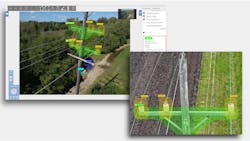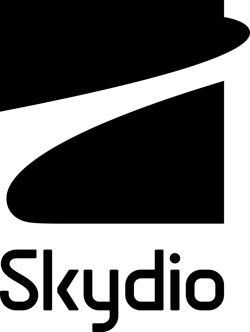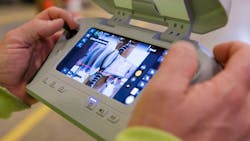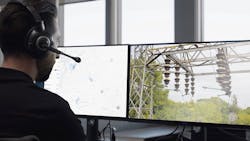In the utility industry, ensuring the safety of employees while maintaining the integrity and functionality of critical infrastructure is paramount. Traditional inspection methods often put workers at risk, especially when dealing with high-voltage equipment or hard-to-reach locations. However, the rise of drone technology is transforming the landscape of utility inspections, making them safer and more efficient.
The challenge of traditional utility inspections
Utility inspections are necessary but can be inherently risky. Workers often need to scale heights or navigate hazardous areas to assess the condition of electrical lines, substations, and other infrastructural components. This not only puts their safety at risk but also makes the process time-consuming and costly due to the extensive safety protocols required.
How aerial robotics enhance safety and efficiency
Drones are revolutionizing this process in several key ways:
- Reducing Risk: Drones decrease the need for workers to physically access dangerous or difficult-to-reach areas. By conducting aerial inspections, drones keep workers safely on the ground, significantly reducing the risk of accidents and injuries associated with elevated or hazardous area work.
- Comprehensive Data Collection: Skydio drones are equipped with advanced sensors and cameras that capture high-resolution images and data from multiple angles. This capability allows for a more thorough inspection of infrastructure than what is typically possible with manual inspections. The detailed imagery helps identify potential issues before they become critical, ensuring timely maintenance and preventing costly outages.
- Operational Efficiency: Deploying drones for inspections drastically reduces the time required to assess utility assets. What used to take several days and multiple crew members can now be accomplished in a few hours with just one drone operator. This efficiency not only cuts down operational costs but also speeds up the decision-making process, allowing utility companies to act swiftly on maintenance needs.
The user-friendly nature of modern drone technology
One of the standout features of modern drone technology is their user-friendliness. Designed with autonomy and ease-of-use in mind, these drones can be operated by personnel with minimal training, thanks to:
- Autonomous Navigation: Autonomous drones are equipped with AI-driven autonomous navigation systems that can avoid obstacles and adapt to new environments in real-time. This reduces the operator's workload, improves the learning curve, and minimizes the risk of human error during flights.
- Pre-programmed Flight Paths: Operators can pre-define flight paths, allowing drones to conduct routine inspections without constant manual control. This feature is particularly beneficial for regular maintenance checks of widespread utility networks.
- Remote Operations: Drones can also be operated remotely, which is crucial for inspecting areas that are either too risky or remote for human access. Remote operation allows utility companies to manage inspections from a central location, enhancing the safety and efficiency of their field operations. Pacific Gas & Electric (PG&E) operates one of the largest and most advanced drone-based equipment inspection programs in the world and recently became the first utility in California to begin conducting fully remote drone operations for electric system inspections - they recently released a 3 minute video showcasing their remote operations.
- Automated Inspections and Emergency Response: Automated dock-based systems enable automated drone inspections and rapid deployment during emergencies. Drones housed in these docks can launch automatically when needed, perform predetermined inspection routes, and return for charging without human intervention. This capability is particularly useful for continuous monitoring and immediate response following incidents like storms or equipment failures. Click here to watch how American Electric Power Station Technical Services uses drones to optimize their response to a static line failure, quickly capturing information to prevent another failure before it started.
Real-world application and impact
Utilities that have integrated drone technology into their inspection processes report significant improvements in safety and data accuracy. For instance, a major utility company utilized drones to inspect transmission lines crossing rugged terrains. The drones provided detailed imagery that identified wear and potential hazards on the lines, which were previously undetected by traditional inspections. This not only prevented a potential outage but also ensured the safety of the maintenance crew by accurately pinpointing the areas needing attention.
The integration of easy-to-use drones like those from Skydio is setting a new standard for safety and efficiency in utility inspections. As this technology continues to evolve, it promises to further enhance the way utilities manage their infrastructure, prioritize maintenance tasks, and safeguard their employees. The future of utility inspections is here, and it flies—safely and efficiently.
About Skydio
Skydio is the leading U.S. drone manufacturer and world leader in autonomous flight technology. Founded with the mission to make the world more productive, creative, and safe with autonomous flight, Skydio leverages breakthrough AI to create drones that are incredibly capable and easy to use. Trusted by consumers, enterprises, and government agencies, Skydio drones provide robust, innovative solutions across a wide range of applications, from emergency response to asset inspection, ensuring safety and efficiency in operations. To learn more about Skydio’s solutions for utility inspection, click here.



